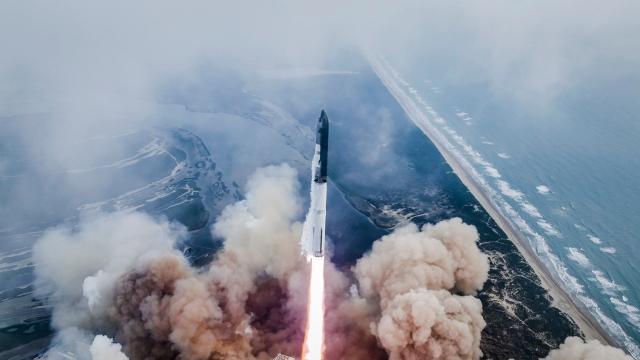Starship flew faster and longer than ever before on Thursday, but with both stages lost during the mission, there’s clearly much more progress to be made. Here’s our detailed breakdown of Integrated Flight Test 3 and what happens next.
The megarocket, standing 400 feet tall (121 meters), took off at 9:25 a.m. ET yesterday from SpaceX’s Starbase facility in Boca Chica, Texas. The most powerful rocket in the world, pushing off from the planet with more than 16 million pounds of thrust, was pushed to its limits, succeeding in some ways but falling short in others. Here’s how it all went down.
Meritorious methane
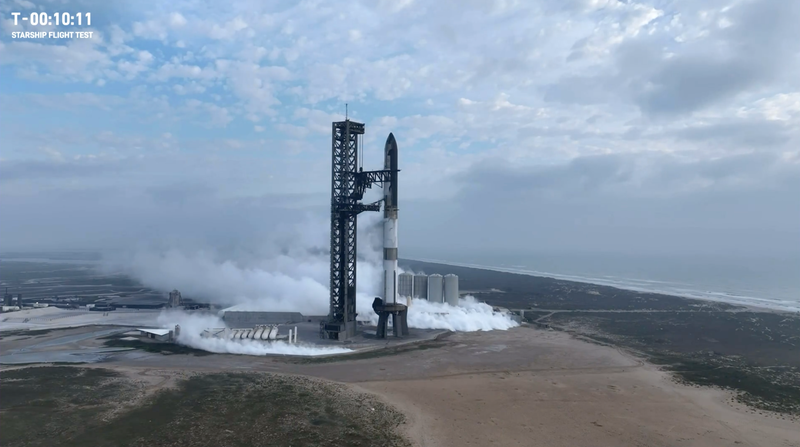
Propellant loading began on Thursday morning at approximately 8:35 a.m. ET, following a delay caused by boats loitering in restricted waters near the Boca Chica testing facility. The loading of 10 million pounds of methane and liquid oxygen propellant was, as usual, a cinch for SpaceX; rarely, if ever, does this fuel cause the company problems (in case you’re wondering, Falcon 9 runs on liquid oxygen and rocket-grade kerosene). Contrast that with NASA’s Space Launch System (SLS) rocket, which runs on liquid hydrogen—a particularly difficult and volatile fuel to handle and a frequent cause of scrubs.
Related article: Why Hydrogen Leaks Continue to Be a Major Headache for NASA Launches
Spectacular as ever

The experimental megarocket left the launch mount at 9:35 a.m. ET, approximately 95 minutes after the opening of the launch window, piercing through a somewhat cloudy sky. This was the second Starship launch in which the water deluge system, designed to quell the tremendous power exerted by the rocket at the launch mount, did its job.
Reliable Raptors
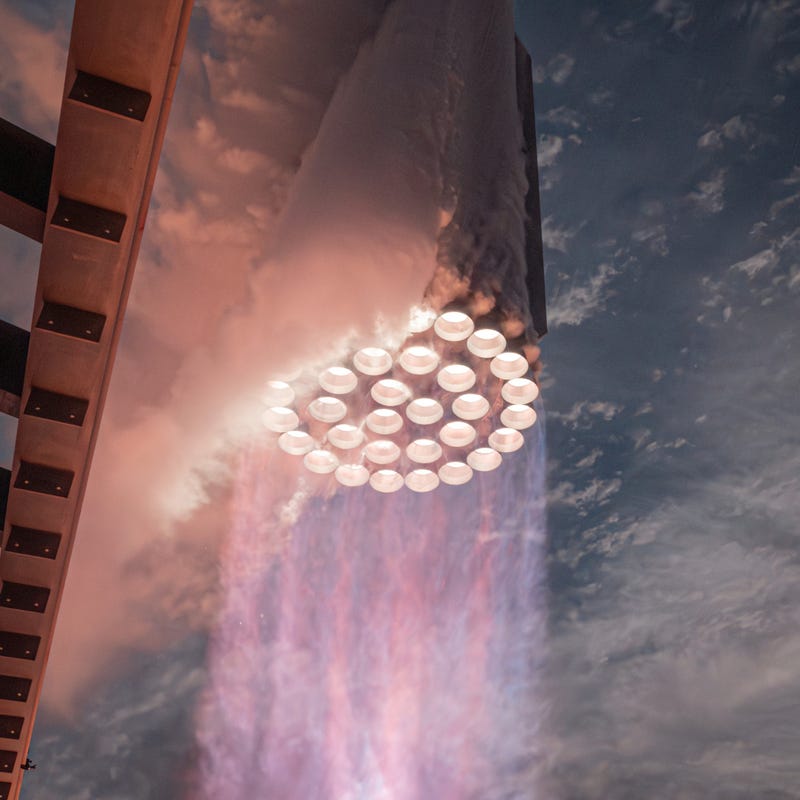
For the second time in a row, all 33 Raptor engines lit up and stayed that way for the full duration of the Super Heavy launch stage. Concerns about Raptor reliability were raised after the first flight test on April 20, 2023, when several engines failed during the launch, but this latest performance is sure to boost confidence.
Stage separation: so hot
Integrated Flight Test 3 (IFT-3) involved SpaceX’s second hot staging attempt, which is meant to smoothen the process of stage separation by keeping the engines of the departing booster running for a brief overlap period. During the second test flight, done this past November 18, stage separation appeared to go well, but the Super Heavy booster exploded shortly afterwards owing to a blocked filter.
Things went better during this latest attempt, as Starship executed its second successful hot-stage separation. This involved powering down to only three of Super Heavy’s Raptor engines and igniting the six second stage Raptor engines just prior to separation (these Raptors can work in the vacuum of space). The booster then performed its flip maneuver and full boostback burn, directing it toward its designated splashdown location in the Gulf of Mexico.
Booster crash
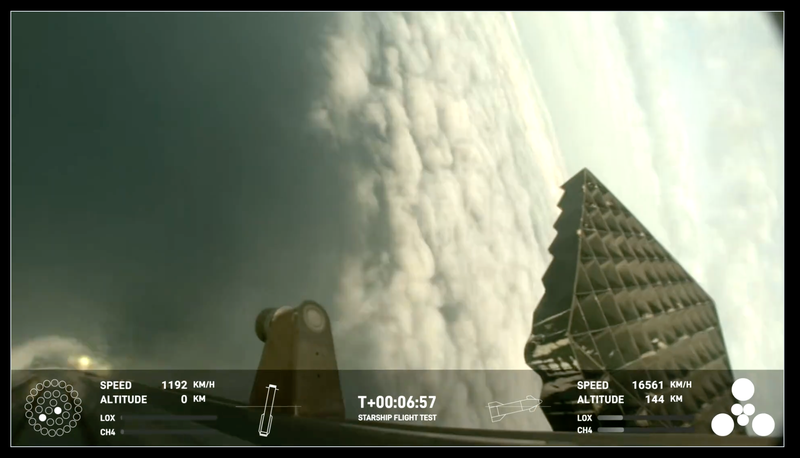
For this test, SpaceX targeted a soft ocean landing of the Super Heavy booster, utilizing its 13 central Raptor engines, each capable of gimbling (pivoting to steer the rocket’s direction). The graphical display on SpaceX’s broadcast suggested that only two engines fired up, while the grid fin was visibly working frantically to orient the falling rocket.
“Super Heavy successfully lit several engines for its first ever landing burn before the vehicle experienced a RUD [rapid unscheduled disassembly],” as SpaceX explained on its website. “The booster’s flight concluded at approximately 462 meters [1,516 feet] in altitude and just under seven minutes into the mission.” SpaceX typically uses the term “RUD” to describe explosions, so I’m not entirely sure what’s meant here; perhaps the booster’s self-destruct system kicked in, or it simply fell apart. Hopefully, we’ll find out soon.
Achievement unlocked
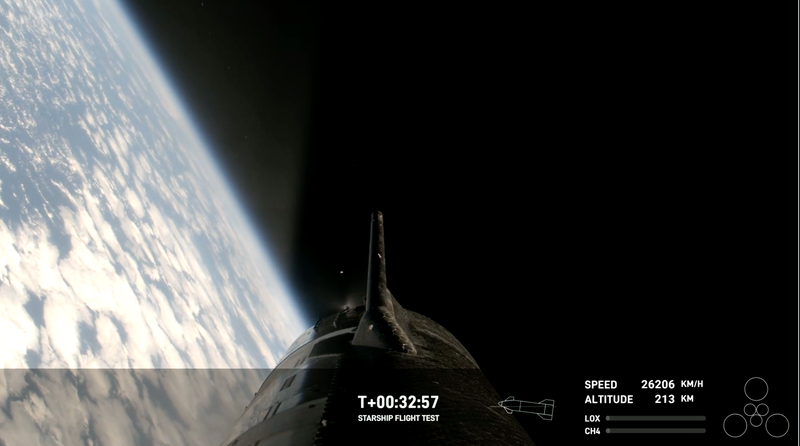
The Starship upper stage continued on its journey through space, attaining, for the first time, an orbital velocity exceeding 16,156 miles per hour (26,000 kilometers per hour). Technically, Starship didn’t achieve Earth orbit (that wasn’t the plan), but its velocity was within the ballpark of the speed needed for it to maintain a stable orbit around the planet.
The spacecraft’s six Raptor engines fired for roughly six minutes, “becoming the first Starship to complete its full-duration ascent burn,” according to SpaceX. That said,“Starship did not attempt its planned on-orbit relight of a single Raptor engine due to vehicle roll rates during coast,” marking one of several failed objectives for the mission.
Working the Pez dispenser
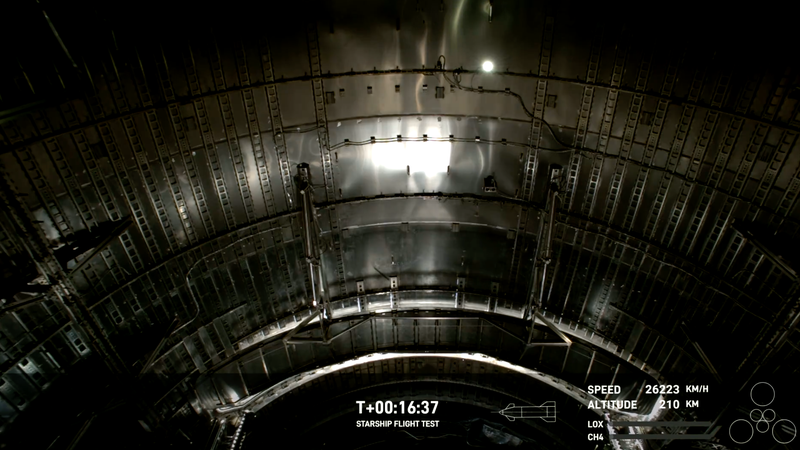
Among the many milestones reached during IFT-3, SpaceX did manage to open and close Starship’s payload door while the vehicle was careening above the planet. Dubbed the Pez dispenser for how it looks and works, Starship will eventually deploy Starlink satellites en masse, among other payloads, similar to how Pez candies leave the dispenser.
Sloshing some propellant around
Another important milestone was the propellant transfer demonstration, which SpaceX conducted under its $US53 million “Tipping Point” contract with NASA. For the test, SpaceX shifted super-cold liquid oxygen between tanks while the vehicle was in space. SpaceX’s future deep space missions, like landing astronauts on the Moon, hinge on transferring large amounts of cryogenic propellant between Starships in orbit. This capability is crucial for Starship’s success—especially for meeting the demands of NASA’s Artemis 3 mission, which aims to return astronauts to the Moon in late 2026.
Keeping NASA happy
Indeed, NASA, which is funding the development of Starship as part of its Artemis program, is keeping close tabs on SpaceX. Writing on X, the space agency’s administrator, Bill Nelson, congratulated the team after the launch, saying; “Together, NASA and SpaceX will return humanity to the Moon, Mars, & beyond.” Indeed, this latest flight is a super positive sign, but to fair, Elon Musk’s company still has a long way to go from now until it can use Starship to safely land human beings on the lunar surface.
A birthday present for the president
The third test flight of Starship occured on March 14, which happened to be Pi Day and the 22nd anniversary of SpaceX’s founding. Gwynne Shotwell, SpaceX president and chief operating officer, shared her congratulations on X, while making note of the anniversary. Musk, the company CEO, typically gets all the glory when it comes to SpaceX’s successes, but Shotwell, who’s been with the company for over 20 years, deserves a ton of credit. That said, she needs to be better when it comes to acknowledging alleged cases of sexism and sexual harassment at the company.
The view from up here
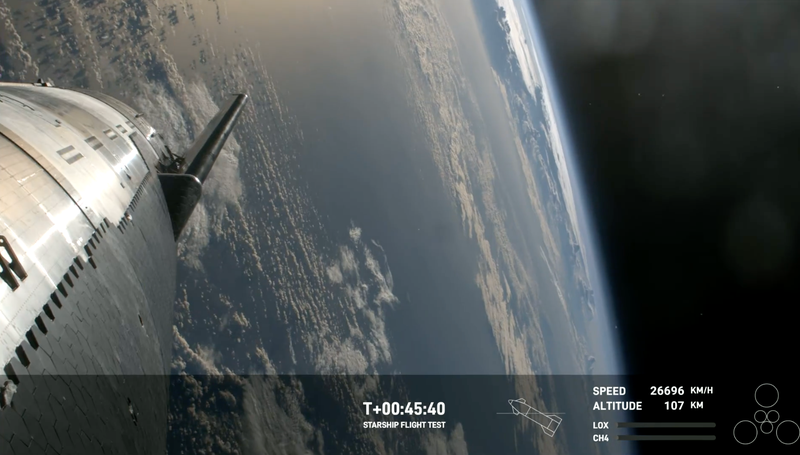
The plan was for Starship to perform a hard splash down in the Indian Ocean, requiring the vehicle to travel some three-quarters of the way around Earth. As a result, Starship flew farther and faster than ever before, skimming the top of the planet’s atmosphere and using the resulting drag as a natural braking system.
The Starlink connection
During its reentry, Starship broadcasted live video through SpaceX’s Starlink network, a notable feat given that the ionized plasma field typically results in communication blackouts. During reentry, the Starlink connection managed to hold up; SpaceX maintained communication with Starship using a series of ground stations along its trajectory and through NASA’s Tracking and Data Relay Satellite (TDRS) system.
Lost on reentry
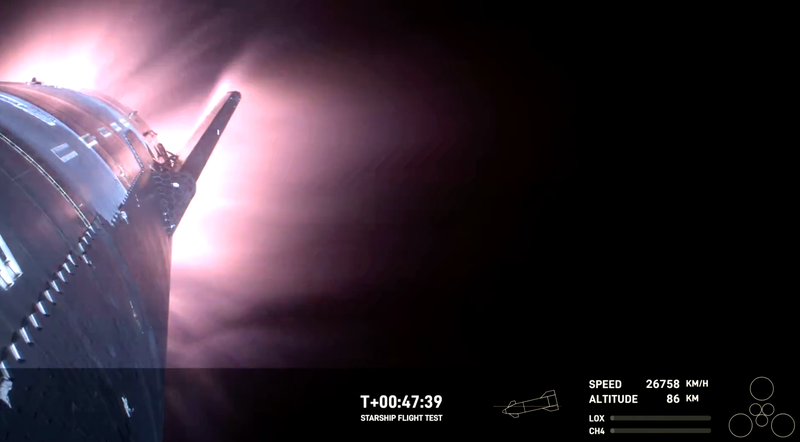
Of all the problems endured during IFT-3, the inability of Starship to survive reentry is perhaps the most serious. Approximately 49 minutes into the mission, Starship suddenly went silent while reentering above the Indian Ocean and disintegrated, preventing the planned hard splashdown in the ocean. SpaceX will now have to carefully evaluate the reentry, during which Starship’s 18,000 hexagonal Thermal Protection System endured temperatures reaching 2,600 degrees F. The 165-foot-long (50-meter) Starship, larger than NASA’s retired Space Shuttle, is designed for reuse, and without the ability to safely return to terra firma, it’s just an oversized rocket.
Yet another FAA investigation
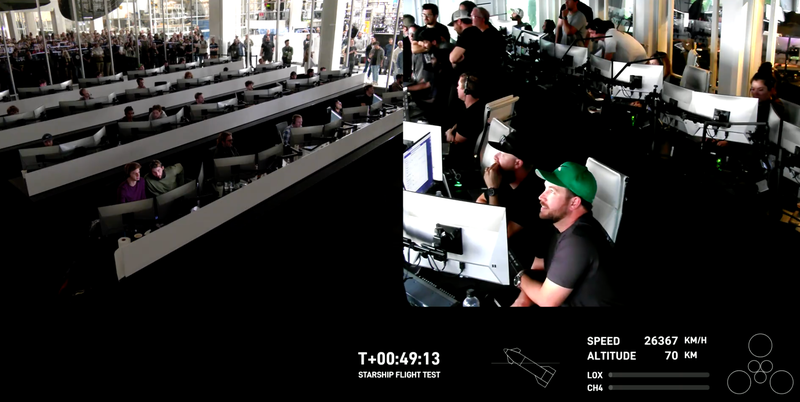
The Federal Aviation Administration declared the recent mission a “mishap,” citing the loss of both the Super Heavy booster and the Starship upper stage, and opened a new investigation as a result. “No public injuries or public property damage have been reported,” the regulator said in a statement, adding that it’s “overseeing the SpaceX-led mishap investigation to ensure the company complies with its FAA-approved mishap investigation plan and other regulatory requirements.” The investigation could result in further delays, but SpaceX does need to clean things up and implement fixes regardless.
Steady progress
Astrophysicist Peter Hague chimed in after the test, saying we should be on the lookout for “dishonest critics of Starship moving the goalposts,” as he wrote on X. Initial doubts about Raptor reliability and boostback dynamics were disproven after the first two flights, Hague wrote, and now he suspects that critics will “opine on heat shields, control issues—and insist that these things can’t be fixed any time soon.” It’s a fair point, as SpaceX has made progress with each of the three Starship launches thus far, and moving past supposedly intractable challenges each time.
Many flights to come
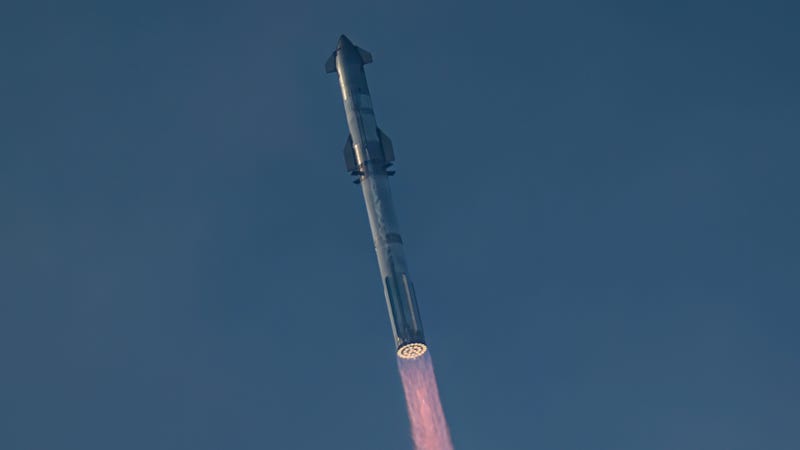
This was the first of many planned Starship missions for the year. Earlier this week, Musk said SpaceX could launch as many as six in 2024. And as SpaceX commentator Siva Bharadvaj said on the broadcast yesterday, the company already has four Starships and four Super Heavy boosters already built, with “more coming off the production line.”
